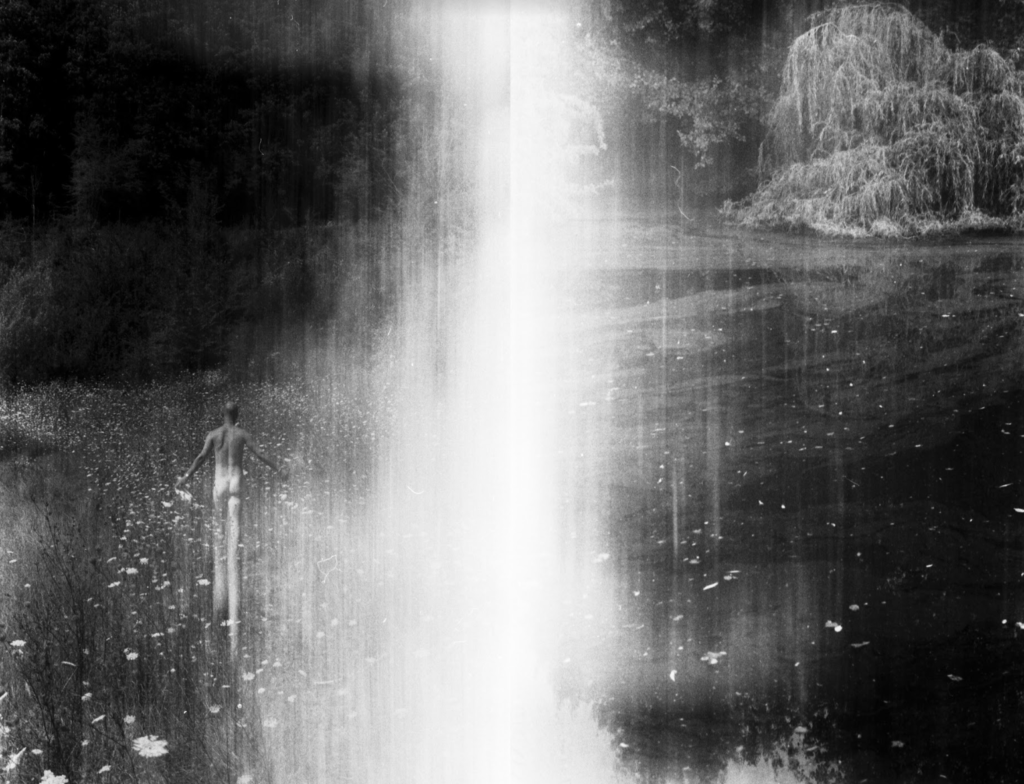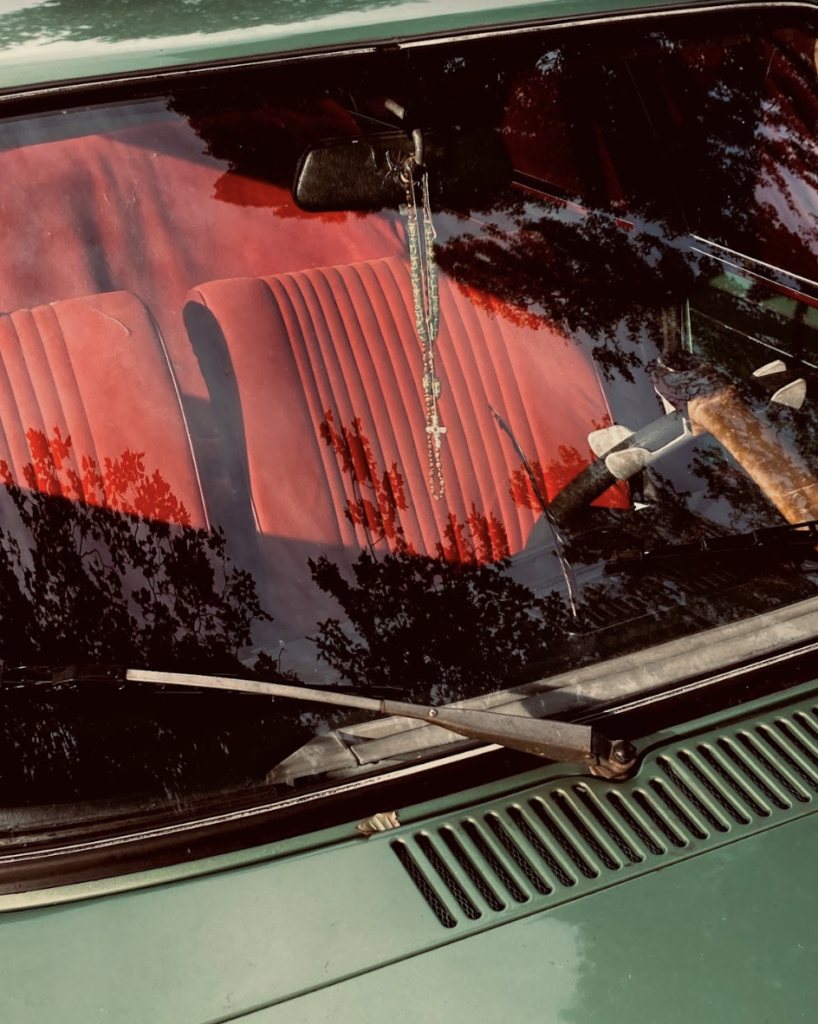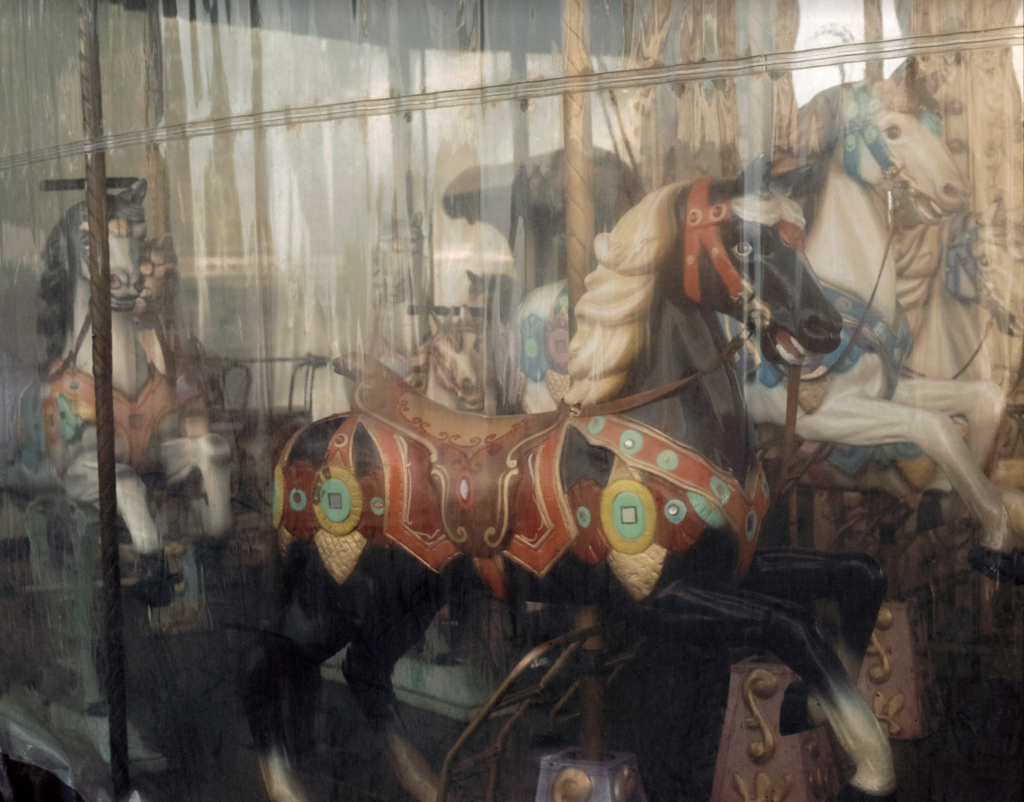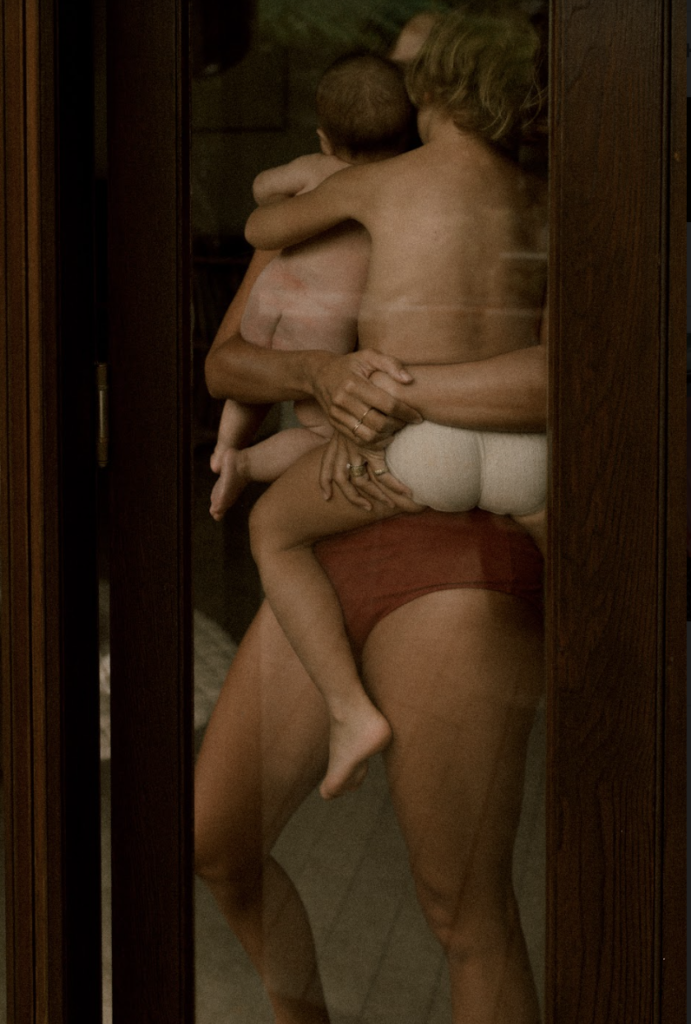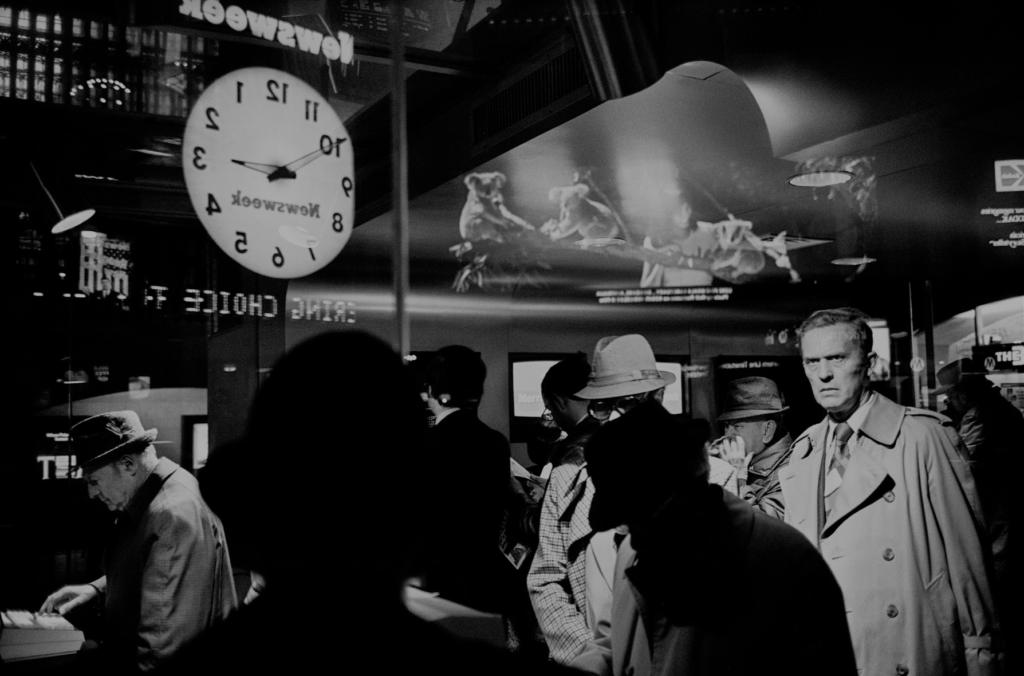Massimo Mastrorillo, Jacob Black, Leonardo Taddei, Ugo Costa, Marco Guadagnini, Lisa Sorgini, and Richard Sandler, all play with the haunting liminal overlaps, and the magic the scene creates. The artists create new narrative and texture with contrasting scenes, colour, reflection, shadow and in some instances, double exposure.
Double exposure, specifically, is defined as the repeated exposure of a photographic plate or film often producing ghost like images. Images appear, textured by another scene, and add both depth and curiosity. The history of double-exposure photography can be traced back to the 1860s when William H. Mumler pioneered what he referred to as spirit photography. He would use a previously exposed negative while taking a portrait, and the resulting photo would appear to have a spirit in it. The origins of double exposure, lend themselves to haunted histories and mimics of the supernatural, as do playing within the spaces of texture, reflection and shadow.
Since then, these tools have been by artists to create new visions, and textures within a work– which are essentially novel landscapes of interconnectedness and divine chaos.
Massimo Mastrorillo’s Aftermath shows a leafy forest scene, boasting deep ambers and saturated greens, that is contrasted to a room with a harsh overhead strip light, and a decorative wooden hanging fish. The work tells the story of the aftermath of Fukushima, and is part of his series “Landscape & Other Things Post-Atomic”. Mastrorillo notes, that the human tendency in a disaster zone is to notice the fresh details and not the ruined landscape. We tend to look for the immediate causes of our distress, though as the artist notes, in doing this, we miss something. He notes that while we look for anything that represents change, we often neglect that it is ourselves who have changed.
The work points to the very contrasting of what is left behind, both natural and man-made, and of rethinking our own positionally within the future:
“We must rethink our place in the sun when a white chunk of it burns bright in its steel crypt a few kilometres away”.
Jacob Black’s Milo tells the story of decay of the living. The work features a photograph that was left to decay in the river Lea, in Hackney. Bare-backed Milo, now appears almost slashed by reed like lines, his body a neon blue. The portrait is contrasted to open holes, and signs of degradation at the hands of natural forces, that here permeate not the photograph itself, but the treatment of the photograph. Milo’s making is now in part the making of the river Lea. Milo tells the story of decay of the living. The work features a photograph that was left to decay in the river Lea, in Hackney. Bare-backed Milo, now appears almost slashed by reed like lines, his body a neon blue. The portrait is contrasted to open holes, and signs of degradation at the hands of natural forces, that here permeate not the photograph itself, but the treatment of the photograph. Milo’s making is now in part the making of the river Lea.
Leonardo Taddei’s Death is not the end, offers a solution post decay, in this almost unearthly scene of deep white lights and a surreal landscape, that a seemingly nude and unburdened man frolics in. The scene almost appears to resemble what many have speculated of the space we inhabit after death. There is a great light that guides us home, and we free, dance amongst the shrubs.
Taddei notes:
“Death is not the end. Life is a show that we look at absently on the street. At that moment, without us noticing it, we are part of it. Someone applauds, someone screams, and someone tries to see better. Then you start walking again and just as the man walks from the light toward the heart of the forest, so too do we know we will one day return home”
Ugo Costa’s Citroën Windscreen shows the merging of the trees shadows on the cars windscreen, a scene of convergence, and of familiarity– It is a scene we all recognize, that somehow transports us to a place we remember. A rosary hangs on the cars mirror, and we recognize this too, and can almost see it swinging in flight. We also recognize exactly how we might imagine the car to smell like: leathery and metallic, and how the warmth of the warm of the leather might feel on our skin. Costa transports us, somewhere we know.
Lisa Sorgini’s Holly, Della and Posey, shows a mother hugging her children, behind a reflection of floorboards ahead. Behind Glass is a body of work motivated by a need to make visible the unseen role of parenting during the isolation of the Covid 19 pandemic that evokes a spectrum of exhaustion, intimacy and tenderness.
The artist notes:
“These works present the light and darkness of motherhood during these extended periods of lockdown”.
The glass acts as a divider between what is real, and what is reimagined or reinforced by female stereotype.
Richard Sandler’s Grand City Central shows a busy scene at the infamous Midtown Manhattan transportation hub. The scene is contrasted to a neon dial and a backward clock, as trench clad businessmen bustle and weave between spaces, racing home. It is precisely what happens here: between spaces, that Sandler so acutely captures, and the curiosity of what happens beyond, and before, diminishes as the scene becomes enough in itself.
Massimo Mastrorillo, Jacob Black, Leonardo Taddei, Ugo Costa, Marco Guadagnini, Lisa Sorgini, and Richard Sandler reflect on what lies between the shadows, and how worlds combine, reminding us, of where our own memoric shadows linger.




